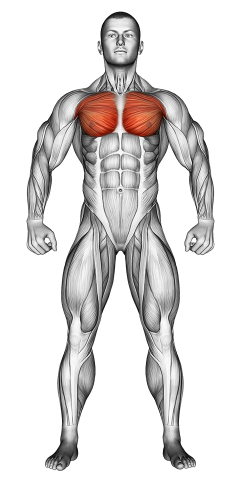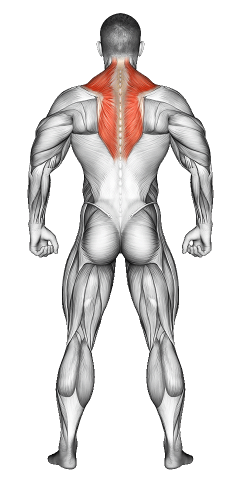Exercise Ball Dumbbell Flys: Video Tutorial & Exercise Guide

Written By: Claude Michael
Updated: Oct 13, 2024
| Workout | Exercise Ball Dumbbell Flys |
| Primary Muscle Group | Chest |
| Secondary Muscle Group | Shoulders |
| Equipment Required | Exercise Ball, Dumbbell |
| Force Type | Push |
| Mechanics | Isolation |
| Exercise Type | Strength |
| Difficulty | Intermediate |
Exercise Ball Dumbbell Flys: Video Tutorial & Exercise Guide
- 1.Exercise Ball Dumbbell Flys: Muscle Groups
- -1.1Primary Muscle Group
- -1.2Secondary Muscle Group
- 2.Exercise Ball Dumbbell Flys: Step-by-Step Guide
- 3.Exercise Ball Dumbbell Flys: Overview
- 4.Exercise Ball Dumbbell Flys: Benefits
- 5.Exercise Ball Dumbbell Flys: Pro Tips & Advanced Techniques
- 6.Exercise Ball Dumbbell Flys: Progression Plan
- 7.Exercise Ball Dumbbell Flys: Frequently Asked Questions (FAQs)
Secondary Muscles Group
Exercise Ball Dumbbell Flys: Step-by-Step Guide
- Step 1: Sit on an exercise ball with a dumbbell in each hand. Slowly walk your feet forward and roll your body down until your upper back is supported by the ball, forming a stable bridge position with your feet flat on the floor and knees bent at a 90-degree angle.
- Step 2: Hold the dumbbells above your chest with your palms facing each other and your arms extended, but with a slight bend in your elbows. Engage your core to stabilize your body.
- Step 3: Slowly lower the dumbbells out to the sides in an arc-like motion, keeping your elbows slightly bent throughout. Lower the weights until you feel a stretch in your chest.
- Step 4: Bring the dumbbells back to the starting position by squeezing your chest muscles, keeping the same arc motion as you return to the top.
- Step 5: Repeat for the desired number of reps, maintaining control and stability throughout the movement.
Exercise Ball Dumbbell Flys: Overview
The Exercise Ball Dumbbell Fly is a great variation of the traditional dumbbell fly, incorporating stability and balance challenges by using an exercise ball as your base. This movement primarily targets the pectoral muscles (chest) but also engages the shoulders and core as stabilizers.
This exercise is particularly beneficial for developing chest strength while improving overall balance and core stability. The added instability from the exercise ball forces your body to engage more muscles to maintain proper form and alignment.
Exercise Ball Dumbbell Flys: Benefits
The Exercise Ball Dumbbell Fly is effective for building chest strength and muscle definition. The instability of the exercise ball adds a core-strengthening component, as your body must work harder to stabilize itself during the movement.
This exercise is also great for enhancing balance and coordination while promoting flexibility in the chest and shoulder muscles. It’s ideal for those looking to improve upper body strength while challenging their core stability at the same time.
Exercise Ball Dumbbell Flys: Pro Tips & Advanced Techniques
Keep your hips elevated and your core engaged throughout the movement to maintain a stable position on the exercise ball. Focus on controlling the lowering phase to maximize time under tension. For added intensity, you can slow down the eccentric phase (lowering) or increase the weight while maintaining proper form. Make sure to keep a slight bend in your elbows to protect your shoulder joints.
Exercise Ball Dumbbell Flys: Progression Plan
Beginner
Intermediate
Advanced
Exercise Ball Dumbbell Flys: Frequently Asked Questions (FAQs)
What muscles do Exercise Ball Dumbbell Flys target?
+The Exercise Ball Dumbbell Fly primarily targets the pectoral muscles (chest) but also engages the shoulders and core for stability and balance.
Are Exercise Ball Dumbbell Flys suitable for beginners?
+Yes, this exercise can be performed by beginners using lighter weights. Start by mastering the stability required on the exercise ball before increasing the load.
How often should I perform Exercise Ball Dumbbell Flys?
+Include this exercise in your chest or upper body workout 1-2 times per week, allowing adequate recovery between sessions.
What common mistakes should I avoid?
+Avoid letting your hips drop or losing core engagement during the movement. Focus on controlling the weights and maintaining a stable bridge position throughout.
How can I make Exercise Ball Dumbbell Flys more challenging?
+To increase difficulty, use heavier dumbbells, slow down the lowering phase, or add a pause at the bottom of the fly to increase time under tension and core activation.
Share
Don’t Wish for It, Work for It – Join the FlexXP Newsletter Today!
Thank you for signing up for the FlexXP Newsletter!
This site is protected and the Google Privacy Policy and Terms of Service apply.

